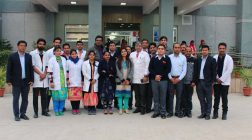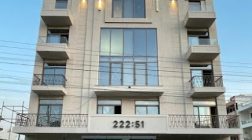India's Pricing Gamble may prove costly for Healthcare image!

The National Pharmaceutical Pricing Authority’s withdrawal of internal guidelines for fixing prices of “non-essential” medicines, and clarification that its earlier order capping the prices of 108 anti-diabetes and cardiovascular formulations stays, deepens the mystery surrounding the drug regulator’s recent actions. What prompted the NPPA to issue these guidelines on May 29, enabling it to impose pricing restrictions even on drugs outside the National List of Essential Medicines (NLEM) citing “public interest”? And what made it withdraw the same on September 22, stating this was “in compliance with the directions received from… the department of pharmaceuticals”? Surely, an independent authority entrusted with enforcing the provisions of the Drugs (Price Control) Order (DPCO) cannot simply be “directed” to withdraw any policy guidelines — in this case, without specifying any reasons. The clarification that the rescinding shall be “prospective” only compounds the confusion.
True, forcing drug makers not to charge more than 125 per cent of the simple average price of various brands in each of the 108 formulations was a controversial intervention by the NPPA. Although para 19 of the DPCO empowers the regulator to fix ceiling prices for any drug, this is to be invoked only in “extraordinary circumstances”. The industry has a point that this provision potentially extends price control to all drugs, rendering the NLEM itself redundant. But that still does not justify the patently anti-competitive pricing practices resorted to by some manufacturers. There are many cases of branded formulations of particular companies costing 5-10 times more than the products of rivals having virtually the same therapeutic value, and yet commanding disproportionately higher market shares. This clearly has to do with the nexus between drug firms, doctors and the distribution channel that results in only expensive branded medicines being bought. And the consumer here is usually someone who buys based on the doctor’s prescription rather than by exercising informed, free-market choice.
Yet the solution to such “market failure” situations does not lie in bringing back price controls through crude para 19-type instrumentalities. These, if anything, will only deter the industry from making investments in domestic manufacturing and in R&D. A better route is self-regulation. Drug makers should not deny the existence of anti-competitive pricing and marketing behaviour. It might be worthwhile for them, in fact, to evolve a voluntary code of good practices in this regard. Also, it is better that the NPPA confines its remit to NLEM drugs. For the rest, the Competition Commission of India is the best body to probe any unfair trade practices.
– See more at: http://indianexpress.com/article/opinion/editorials/wrong-medicine-2/#sthash.e9US9sFU.dpufThe Supreme Court will hear next week a public interest writ petition challenging a circular providing for increase in the prices of life-saving and other essential drugs.
A Bench of Chief Justice H.L. Dattu and Justices S.A. Bobde and A.M. Sapre told petitioner-advocate M.L. Sharma on Thursday that the PIL would be listed for hearing as expeditiously as possible.
The petitioner said the National Pharmaceutical Pricing Authority (NPPA) had issued a circular on September 22 providing for a hike in the prices of 108 life-saving drugs, resulting in a windfall gain to pharmaceutical companies.
“There are approximately 4.1 crore diabetes patients in India, 5.7 crore people have coronary heart disease, 22 lakh suffer from TB, 11 lakh from cancer, 25 lakh from HIV/AIDS and 6 crore blood pressure patients who are in need of life-saving drugs,” he said.
The petitioner alleged that there was a conspiracy among government officials and pharmaceutical companies for allowing an increase in drug prices. Citing examples of the steep increase in drug prices, he said, “Glivec, an anti-cancer tablet, rose from Rs. 8,500 to Rs. 1.08 lakh; Plavix, a blood pressure/heart ailment tablet rose from Rs. 147 to Rs. 1,615; anti-rabies injection and Kamrab from Rs. 2,670 to Rs. 7,000.” “The government succumbed to pressure from industry lobbies,” he claimed.
The NPPA’s earlier decision to impose price controls had been hotly contested by the industry and as a result the authority had withdrawn guidelines for price control issued under the Drug Prices Control Order, 2013, Mr. Sharma said.










